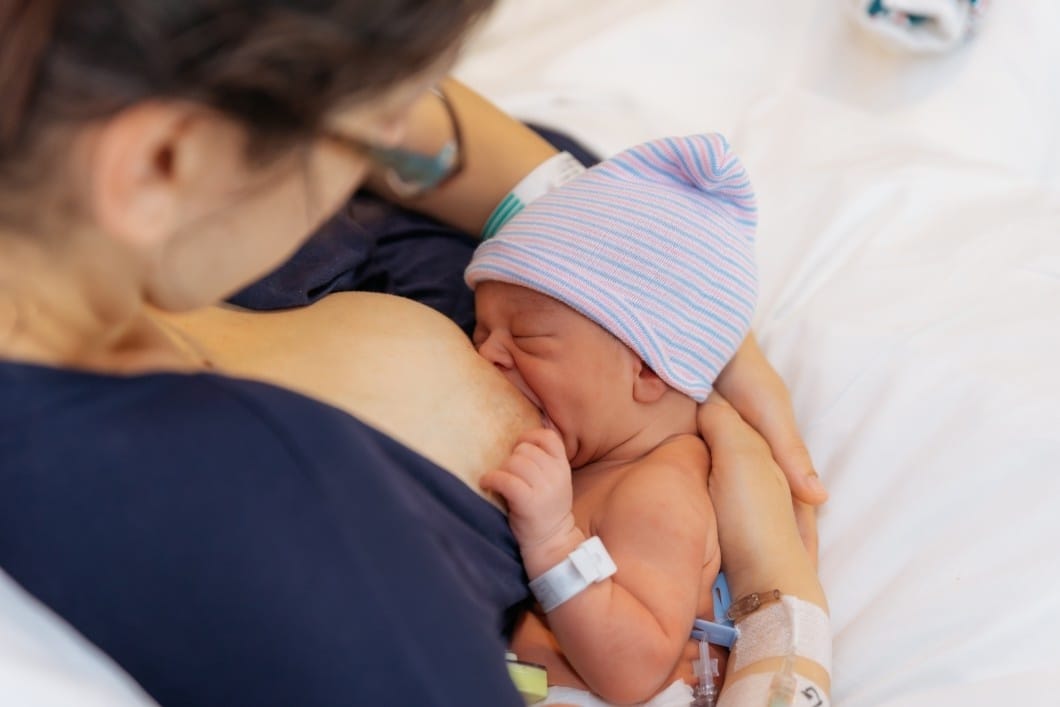Mastitis vs thrush: What they are and how to treat them

We all have unique breastfeeding journeys and unexpected problems can pop up along the way.
Table of Contents
We all have unique breastfeeding journeys, and unexpected problems can pop up along the way. Both thrush and mastitis are infections of the breast, and both cause sore nipples and breast pain. Luckily, both are also easy to treat, especially if they’re caught early.
So what’s the difference between mastitis and thrush?
Is it mastitis or thrush? Here’s how to tell the difference
Mastitis and thrush are both breast infections, but the symptoms are a little different.
What is mastitis?
Mastitis is an inflammation of breast tissue that causes pain, swelling, warmth and redness. Fever, chills, and flu-like symptoms are also common.
The two main causes of mastitis are plugged milk ducts and nipple cracks or abrasions that enable bacteria to enter the breast. Other risk factors for mastitis include poor breastfeeding technique or latch, wearing a bra that is too tight and having previously had mastitis in the past (though some mothers develop mastitis in the absence of any of these risk factors).
All possible cases of mastitis should be evaluated by a lactation or medical professional as soon as possible.
How to treat mastitis
You will likely be encouraged to continue to breastfeed from the affected side, making sure that your breasts are fully emptied out after each feeding. Using warm compresses and breast massage prior to feeding can also help.
Over-the-counter pain relievers, such as ibuprofen, are commonly used for mastitis-associated pain and discomfort. Other tips for moms with mastitis include focusing on getting rest between feeding and pumping sessions, increasing fluid intake, starting each breastfeeding session on the affected side, and applying cold packs to the affected area between feedings.
If a mother with mastitis gets very ill or has a significant worsening of symptoms over a 12 to 24-hour period, antibiotics may be needed to clear a bacterial infection.
What is thrush?
Thrush is a fungal (yeast) infection of the nipple area that can cause significant pain and discomfort. Symptoms of thrush include a sudden onset of intense nipple pain while nursing (does not improve with changing latch or technique), an itching or burning sensation of the nipples, or a pink or red, flaky rash around the nipples.
Symptoms of thrush in a baby include white patches visible in the mouth or on the tongue, feeding refusal or pain while eating, and a diaper rash that does not respond to the application of common diaper rash creams or ointments. Some babies with thrush have no symptoms at all.
Risk factors for thrush include nipple cracks and abrasions, leaving damp nursing pads on for too long, antibiotic use during pregnancy or labor, having a recent vaginal yeast infection, and diabetes.
How to treat thrush
Treatment for nipple thrush includes treating both mother and baby at the same time. Oral nystatin is the most common treatment for babies with thrush, while moms are usually treated with topical antifungal creams. Severe cases of thrush may require treatment with an oral antifungal, such as Diflucan (fluconazole).
Alternative treatments for mothers with thrush include probiotics and grapefruit seed extract. However, these should be taken under the guidance of a medical professional.
Moms with thrush should continue breastfeeding and pumping during treatment to prevent a decrease in milk supply. Mothers and babies should be treated for at least one week after all symptoms resolve to avoid reinfection.
Other ways to prevent reinfection include frequent hand washing, changing nursing pads as soon as they become damp, rinsing your nipples after every breastfeeding and letting them dry before applying antifungal cream, and making sure that all pump parts, bottle nipples, and pacifiers are boiled after every use to kill any remaining yeast.
Coping with thrush and mastitis
You’ve got this, mama!
Although mastitis and thrush can be painful, they are relatively common, treatable and should not interfere with your ability to breastfeed your baby long term. If concerning symptoms pop up, it’s essential not to ignore them and to seek help and guidance as soon as possible. Most importantly, please remember that you can (and should) continue to breastfeed while being treated for any of these conditions.
This post was originally published on April 29, 2020. It has been updated.


































